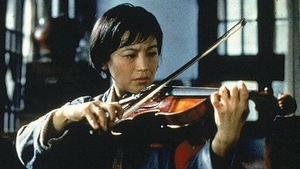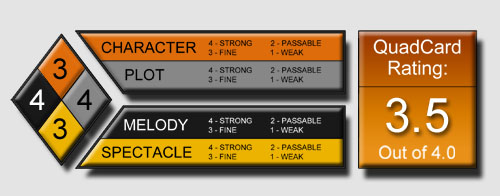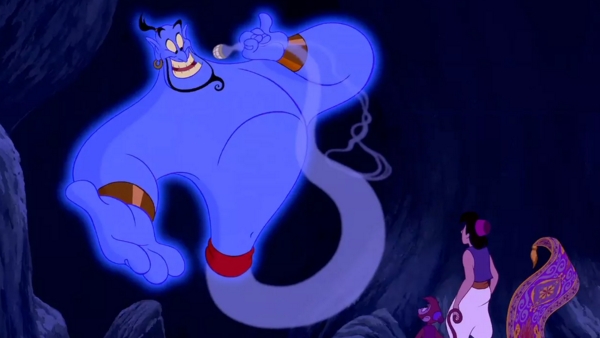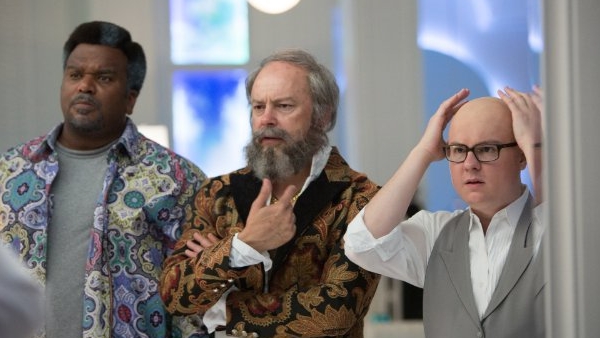
Go,See,Talk is proud to present this Off the Shelf/Netflix Queue entry as the first post from our new contributing writer Jessica. She’ll be making more appearances on the site in the next few months and we’re glad to have her aboard. So enjoy her view and welcome her to G-S-T.
I am drawn to films that are capable of introducing an audience to multiple story lines, and then carefully crafting them together so that these seemingly fragmented parts become one whole by the end. So when Netflix suggested The Red Violin, about the life of one mysterious violin
and its many owners, I imagined this multi-narrative structure would likely be at play. I was curious to see if the film would accomplish the difficult task of bringing these stories together in a convincing way. Not only does The Red Violin succeed at this, it does so in a way that reminds viewers of the universal nature of the arts, (specifically music in this film) and takes the audience along a beautiful journey spanning three centuries, across five diverse countries, through several different languages.
The multi-narrative structure in The Red Violin at first feels reminiscent of a book of short stories, but through the use of flashbacks to the original storyline, about a master violin craftsman Nicola Bussoti and his wife Anna, there is an organization created in the film that makes it easier to follow. While Bussoti carefully crafts together a special violin for their unborn son, Anna consults a Tarot card reader about her future. Each card symbolizes what’s to come, as the blood-red violin is passed from one owner to the next, fulfilling the fortune reader’s prophecies with each flip of a card that serves to introduce the audience to the next story. Mixed in with these diverging stories there are flash-forward scenes into the future, at an auction house in Montreal where several attendees are eagerly waiting to bid on the Red Violin, and as the film progresses the past and the future stories begin to merge in order to create the larger narrative.
The film was directed by Canadian Francois Girard and co-written by him and actor-director Don McKellar. The opening scene takes the audience to 17th Century Italy, to the creation of the red violin and its creator’s tragic story. The violin is later discovered by a group of Monks at an orphanage near Vienna, where it lands in the hands of a young musical prodigy, is then captured by a group of gypsy’s, traded to a charming yet troubled violinist, and ends up in an antique shop in China after his suicide, where the violin’s life is later threatened by China’s Cultural Revolution in the late 1960’s. The red violin survives thanks to a few brave souls, and when the Chinese government does find it thirty years later it is sent to the Montreal based auction house, Duval. The closing scenes leave the audience imagining what the future will hold for this violin that has already traveled so far and survived so much.
Growing up with a mother who collected antiques and attended weekly auctions (though the lots being sold were nowhere near the caliber of those being sold at Duval), I quickly became a fan of modern, IKEA-esque furniture. I couldn’t understand why our mother insisted on buying my sister and me dressers with drawers that would stick, loose knobs, and wobbly mirrors. My grandparents also happened to own an antique store. We would spend the summers with them at the shop, exploring the eclectic booths that filled the store. I remember walking through and fantasizing about the former owners of the numerous bookshelves, vases and serving trays that encompassed the tiny spaces allotted each dealer. Perhaps this is why the film so appeals to me, so maybe I am a little biased, but the narratives you can imagine are endless, and The Red Violin succeeds in showing just how vast an objects journey can be and evokes ideas about sentimental value over materialistic motives, a theme that is further demonstrated through the modern day auction scenes and the greedy nature of some of the characters.
Perhaps the biggest challenge with these types of diverging narratives in film is creating stories that stand out from one another yet equally appeal to the audience, so that certain plot lines do not overshadow others. While viewers will likely relate to certain story lines and characters more than others, based on their ranging historical and cultural backgrounds, the jump from story to story itself feels surprisingly seamless, as it uses the modern day scenes to serve as transitions from one back story to another. This storytelling structure allows Girad’s film to successfully break the normal boundaries of place, time, and even language. It’s an ambitious endeavor, and while it’s not perfect, it is worth our admiration for accomplishing all that it does. The film is told in English, Italian, German, French and Mandarin, with subtitles for the non-English sections. The languages change so often and switches back to English throughout, allowing the story to flow naturally, so that the subtitle boundary that can sometimes hinder the film-watching experience, by distracting the audience away from the visual to the literal translation, vanishes completely.
G-S-T RULING:
The Red Violin is an old gem (released in 1998) that certainly deserves the second coming Netflix has allowed it, as does its creator, Francois Girard, for not shying away from the complex narrative structure while still staying true to his artistic objectives. If the film had one weakness,
it would be that the acting was just, OK, not terrible, but definitely not anything of note. Ultimately the true beauty of the film though, I think, is its ability to blend so many cultures together through the use of this one instrument, exemplifying the way music crosses borders, languages and generations. It serves as a reminder of the universal power of music, or in this film’s case, one tiny, red violin.



3 Comments
Aiden R.
Great review of a fantastic movie. Haven’t seen this in years, been meaning to revisit it for ages. Might be time to just that.
Keep up the great work!
Andrew Crump
What a wonderful first write-up to introduce yourself! Great stuff, Jessica.
Jessica Tomberlin
Thanks, Andrew!